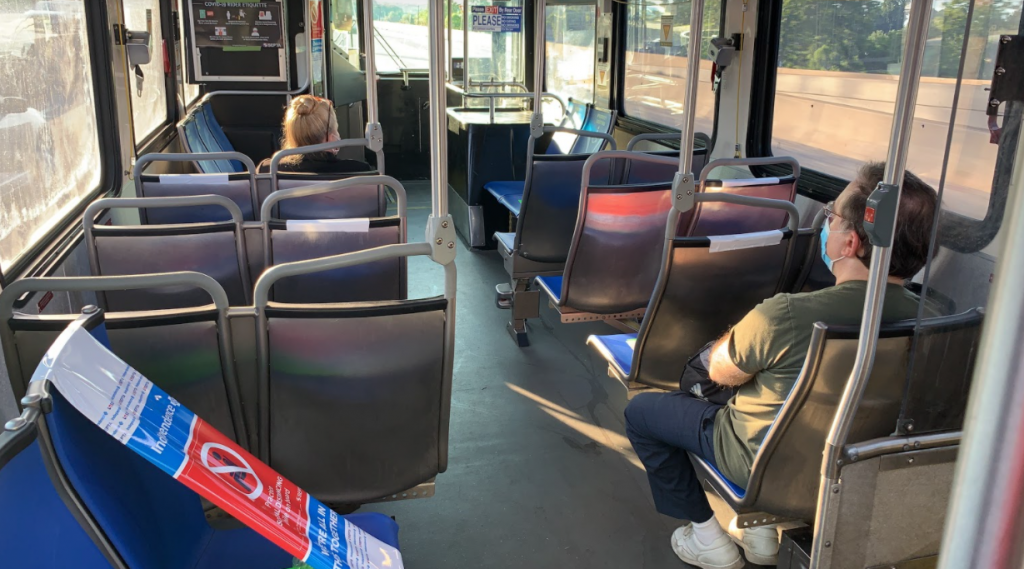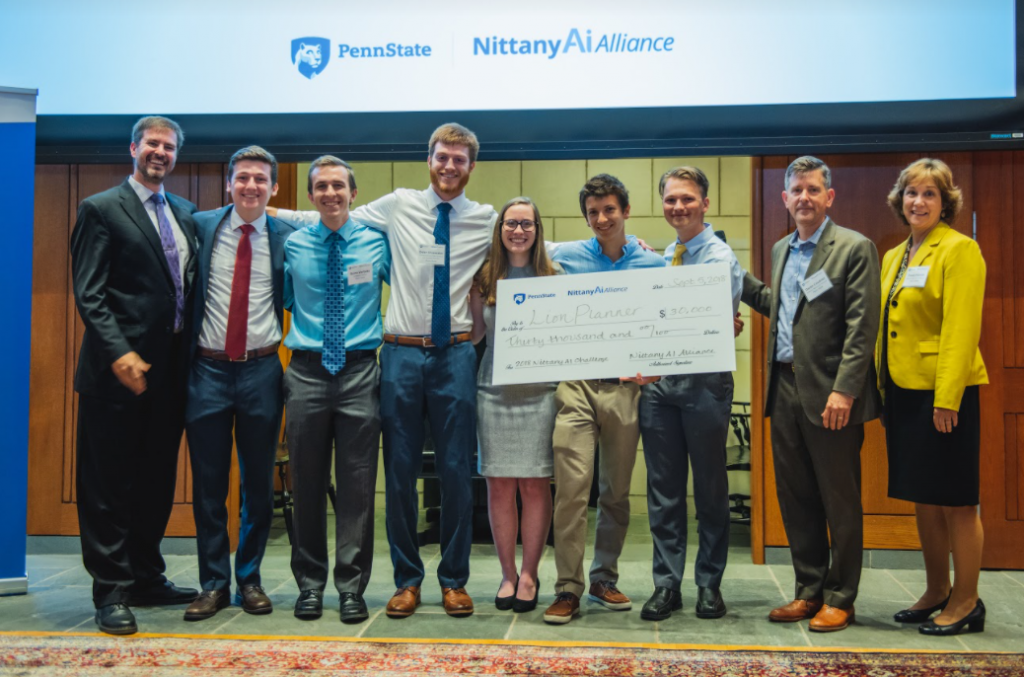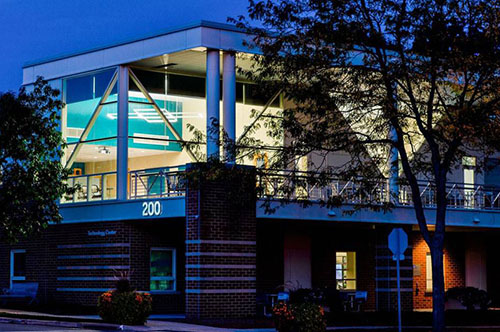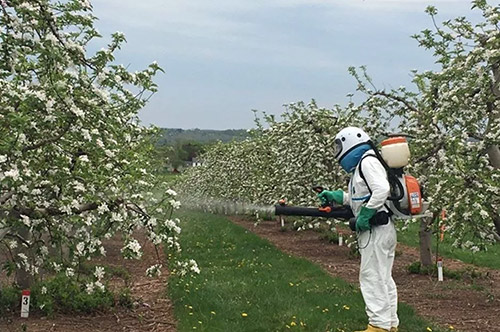Image: Nyansapo
Nyansapo has already put the app to use during a 10-day literacy bootcamp in Kenya.
Nittany AI Alliance started five years ago with a challenge: “What is a real-world problem that Penn State students are experiencing that can be solved with artificial intelligence (AI)?” Since then, that question has been answered by students studying everything from engineering to the arts with solutions like a robot that can locate recyclable metals in a landfill, a system that monitors the body temperature of construction workers, and a live transcription app for the hearing impaired.
These undergraduate teams have collaborated with the Office of Admissions and the Office of Development and Alumni Relations at Penn State, and recently worked with the City of Philadelphia, where they used AI to inform potential transit changes as a result of Covid-19.
“No matter what career students pursue upon graduation, AI will impact it.”
Executive director of innovation in Outreach, Daren Coudriet, says that Nittany AI Alliance and its three levels of involvement — Inspire, Challenge, Advance — is valuable to every undergraduate student because, “No matter what career students pursue upon graduation, AI will impact it.”

Image: SEPTA
Socially distanced and masked patrons on a SEPTA bus.
“There is no shortage of headlines stating that AI will replace as much as 40% to 50% of today’s jobs,” he said. “But I believe jobs will be augmented more so than replaced. Even if you are in a non-technical role, you must be open to allowing AI to augment what you are doing. AI is not going to replace jobs, but it will replace people who don’t embrace the technology and the changes that come with it,” he says.
Nittany AI Alliance’s primary mission is to connect people and resources for an AI-centric innovation ecosystem where Penn State undergraduate students participate in experiential learning projects to benefit nonprofit organizations, while preparing participants to thrive in a world shaped by artificial intelligence.
Coudriet says he “strongly believes every student must be able to understand and recognize how AI and machine learning can be used within their areas of study.”
The first step to introducing students to AI and machine learning is through Nittany AI Inspire events. One recent event was the virtual “Smart Cities, AI and the Greater Good, ” which examined how AI is being used to aid cities in an effort for its residents to live in a more sustainable way.
This demonstrated to me the importance of involving students with diverse skills from atypical colleges. While participants have predominantly been students from the college of engineering and the college of IST, we are actively recruiting students from other colleges to create stronger teams and better outcomes.”
Comcast Cable Senior Vice President, Doug Guthrie, was the opening presenter and he talked about the benefits of partnering with Nittany Al Alliance. “At Comcast, our smart cities focus is to build communities that are connected, secure and sustainable,” he said. “We are very excited to be a part of the Nittany AI Inspire event and to join the cohort of innovators that will design AI solutions to meet the challenges facing smart cities of tomorrow.”
When the Nittany AI Alliance began at Penn State, the group wanted to expose the university to all of the possibilities that artificial intelligence could provide, Coudriet says. He and his team decided that one way to explore these possibilities would be to create a competition for students to tackle everyday problems with AI-powered solutions. Today, the Nittany AI Challenge focuses on AI for Good with four primary pillars: Humanitarianism, Environment, Education, and Health. The Challenge is divided into three phases: idea, prototyping and minimal viable product (MVP), with a total of $50,000 in prize money.

Image: Penn State
LionPlanner was awarded $30,000 from the Nittany AI Alliance during the 2018 Nittany AI Challenge. Left to right: Brad Zdenek, Benjamin Proto, Quinn Verbecke, Dylan Shoemaker, Christina Warren, Matthew Mancini, Michael Roos, Daren Coudriet and Tracey Huston.
Students form teams and pitch their ideas for the application of AI to solve problems facing our world. The ideas are both unique and innovative, joined only by the fact that they can be augmented or enabled with AI. Past examples include teams that prototype solutions to mental health diagnostics, planning a college career trajectory, and natural disaster planning for cities.
“A few years ago, one of the winning teams had a female student, Christie Warren, from the College of Arts and Architecture,” Coudriet says. “The way she helped design the solution to the problem was pure genius. She formed another team the next year and won a second time. This demonstrated to me the importance of involving students with diverse skills from atypical colleges. While participants have predominantly been students from the college of engineering and the college of IST, we are actively recruiting students from other colleges to create stronger teams and better outcomes.”
After a few years of the Nittany AI Challenge, Coudriet says that his team saw “all this talent emerging and wanted to provide opportunities beyond the Challenge.” This led to the third program which provided deeper engagement — Nittany AI Advance.
Credit: Kristin Musulin/SEPTA Future Telework Forecasting Tool
“We saw an opportunity for students to stay engaged, working on team-based projects helping to address real world problems. That is why we created Nittany AI Advance. Today, one team is working with the Office of Admissions to build a smart OCR (Optical Character Recognition) tool that extracts data from high school transcripts using computer vision, and applies natural language processing to interpret and understand the data. Another team is working at the Office of Development and Alumni Relations, working on creating a smart search for raise.psu.edu using natural language processing. Both of these projects have extended over multiple semesters and teams are now working hand-in-hand with Penn State IT staff.
Nittany AI Advance has reached outside Penn State as well. Recently, a team worked with the city of Philadelphia, partnering with Emily Yates, Smart Cities Director, and the Southeastern Pennsylvania Transportation Authority (SEPTA) to utilize AI to better assess COVID-induced telecommuting’s long-term impact on the regional transit and the future of Center City.
“This project afforded me the opportunity to experience a real-world consulting project, apply the skills I learned in the classroom, and hit the ground running as an intern,” says Nittany AI Advance participant Joel Seidel. “The experience got me in the door at Accenture and turned into a full-time job offer, which I likely would not have been considered for without being a part of the AI for Good project.”
Coudriet says that focusing so strongly on AI and machine learning has immense benefits not only for Penn State and tomorrow’s graduates, but innovation and industry throughout Happy Valley.
“I see Nittany AI as a startup within Penn State,” Coudriet says. “Our group feeds into the innovation ecosystem here in Happy Valley, enabling our partners to explore opportunities for innovation using AI and machine learning.”
“Innovation doesn’t just happen. It needs a catalyst,” he says. “And technology can be that catalyst. AI is a disruptive technology that will wreck many existing business models, but that disruption will also create opportunities for new businesses. Look at Amazon versus Macy’s—Amazon leveraged the disruptive capabilities of the internet to create a new model, while Macy’s simply utilized the internet as ‘just another sales channel for commerce.’ We can see how that has turned out for both companies.”
“I see Nittany AI as a startup within Penn State,” Coudriet says. “Our group feeds into the innovation ecosystem here in Happy Valley, enabling our partners to explore opportunities for innovation using AI and machine learning.”




Comments
Powered by WP LinkPress